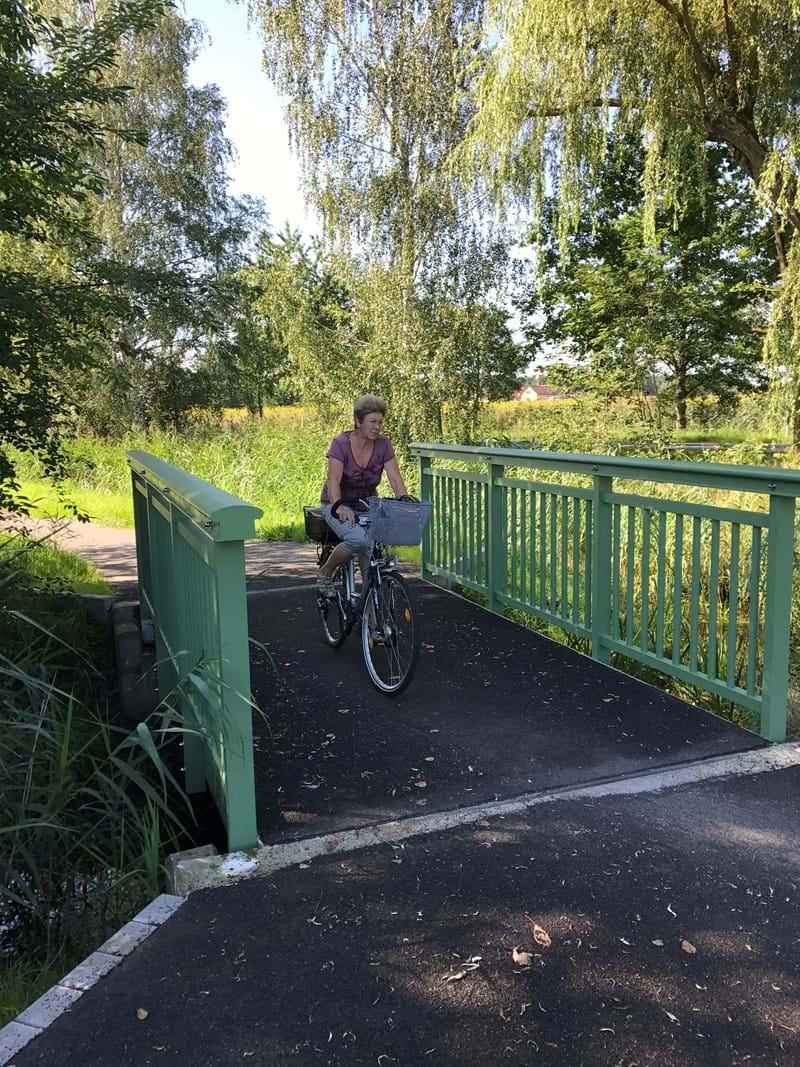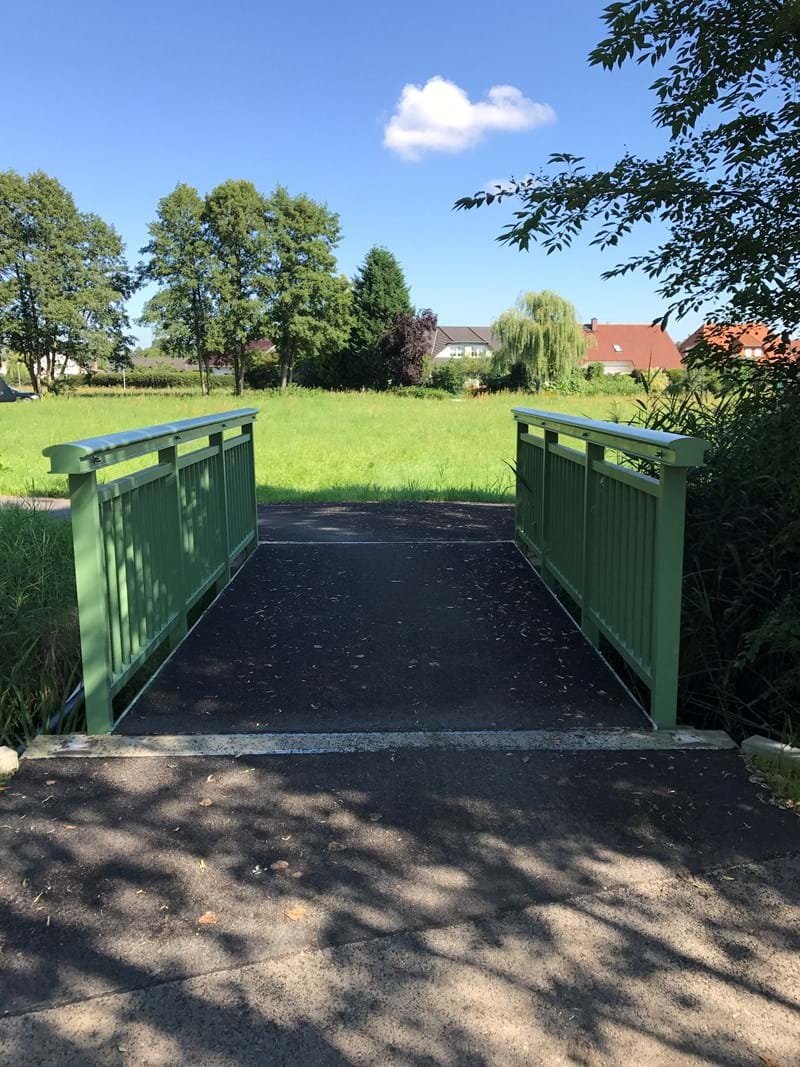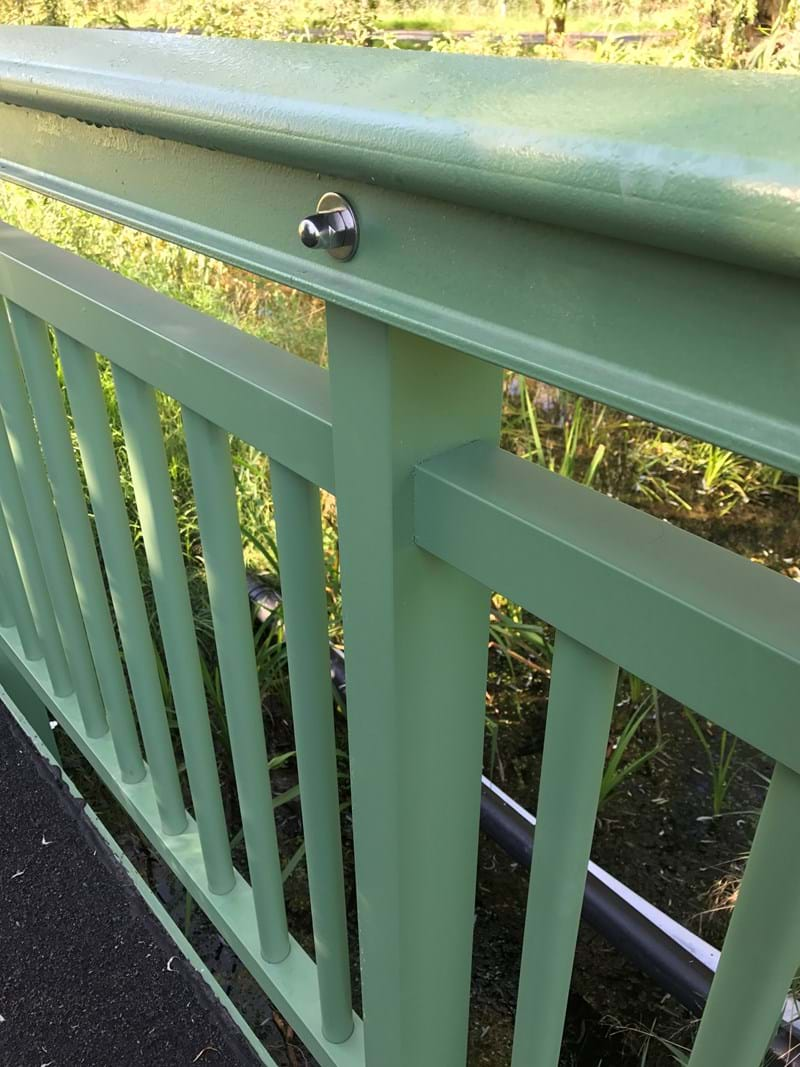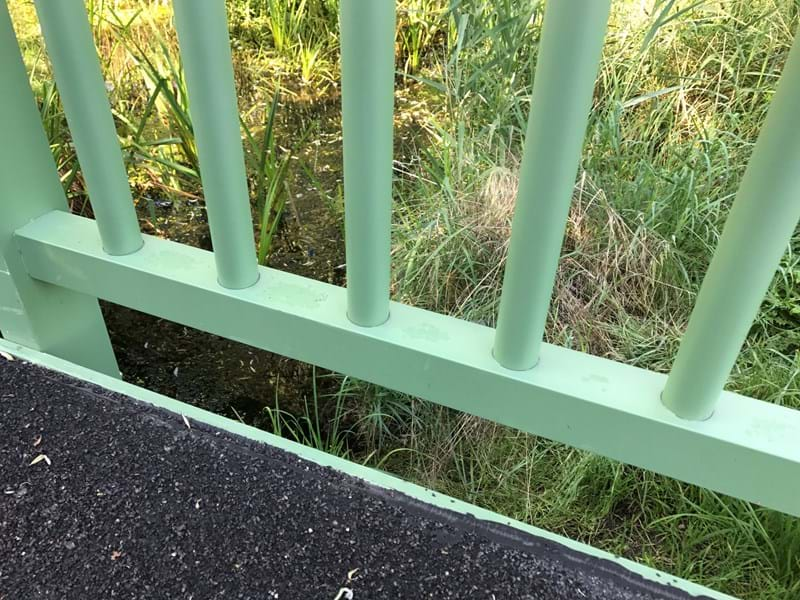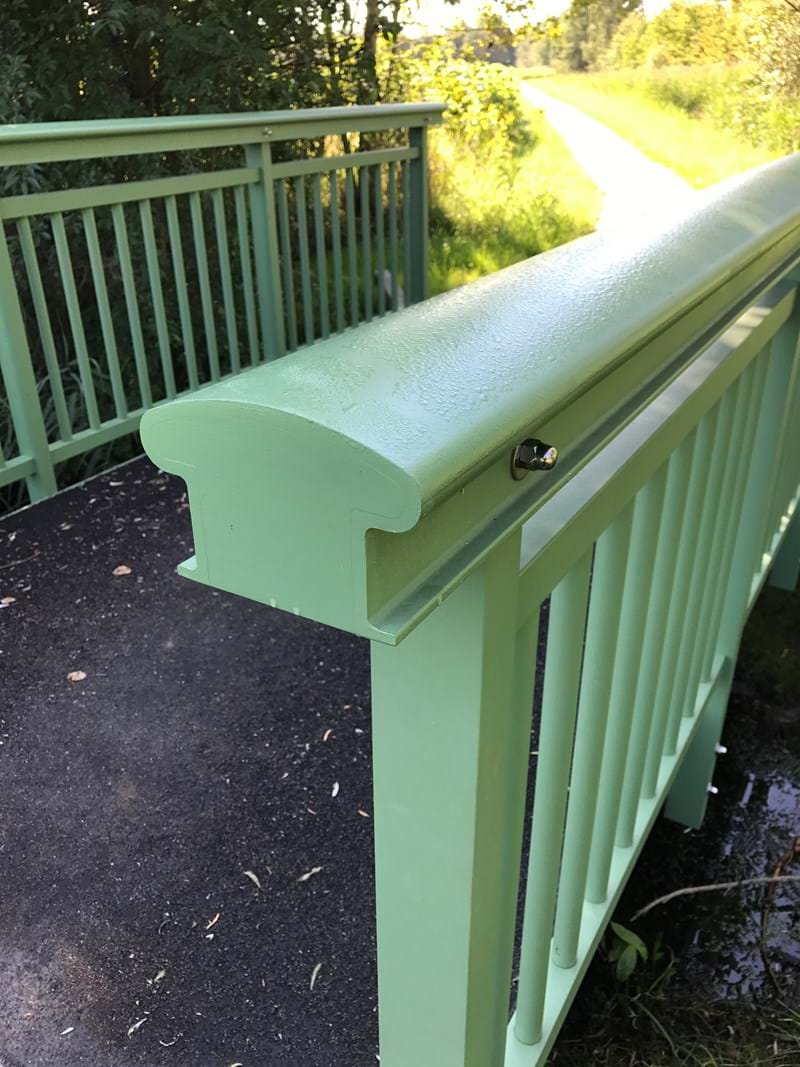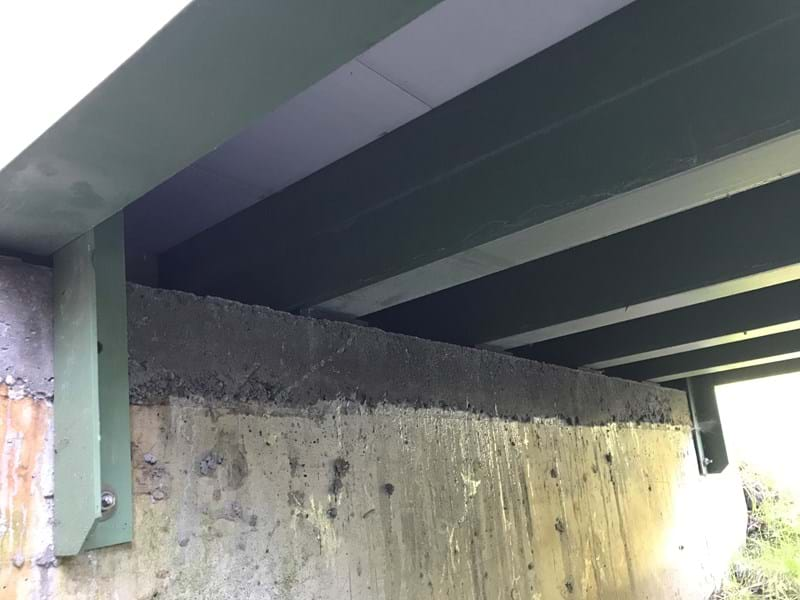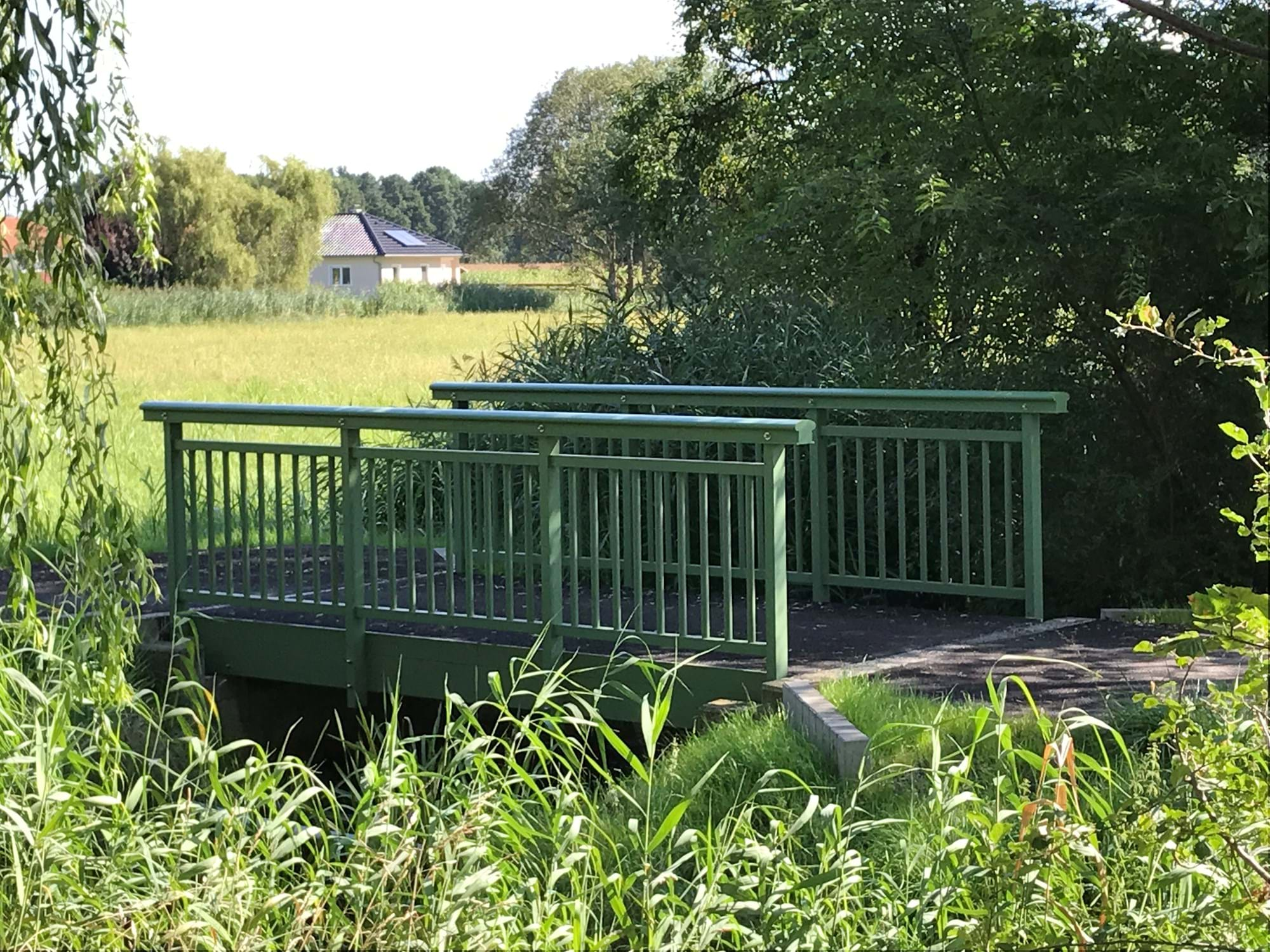

Fiberline Building Profiles A/S
Length: 4,6 x 2,6 m Profiles: FBD300 bridge deck 100 x100 square tubes and carbon fibre profiles Load capacity: 5 kN/m2 + 6,5 t service trolley Location: Kolkwitz, Germany
When you have 1500 km of canals and a marshy wooded area there are major savings to be made on maintenance by choosing a durable and rust-free bridge. In the eastern German town of Kolkwitz this was the consideration that made fibreglass the most cost-effective solution when investing in a new bridge.
With its network of large and small canals winding through the landscape, Spreewald, Europe's largest inland delta, needs a huge number of bridges to serve local residents and the many visiting tourists. In Kolkwitz, situated at the heart of the area, it was the prospect of low maintenance costs which prompted the planning authority to invest in a new fibreglass bridge rather than one of wood.
Christian Scholze, Technical Solution Manager, Fiberline:
"As the area has a tradition for wooden bridges it is unusual for Fiberline even to be considered as a bridge supplier. But wooden bridges rot quickly in a marshy environment, so in the long run Kolkwitz stood to save a lot of money by opting for a no-rust fibreglass bridge."
The use of lightweight fibreglass meant that our partner, Fiber-Tech Construction GmbH, were able to assemble the entire bridge in their factory before transporting it to the point of installation. On-site erection time and expenditure on special machinery could therefore be reduced.
Christian Scholze:
"Kolkwitz chose the most cost-effective solution viewed over the life of the bridge, as there are savIngs to be made both on maintenance, service life, and not least the low weight where existing abutments could be re-used."
After installation of the bridge structure, asphalt was applied.
The new bridge is made of a durable, no-rust fibreglass, which ensures long and efficient performance even under the demanding conditions to be found in the Spreewald delta. The substructure consists of six fibreglass beams, all further-reinforced with carbon fibre lamellas to provide the added strength needed to accommodate local service vehicles. The handrail system and bridge deck are also made of fibreglass.
The Spreeland delta is traditionally known for its many wooden bridges, which blend naturally with the marshy woodland. The fibreglass bridge was therefore designed with rectangular profiles that resemble the timbers on the normal wooden bridges. The bridge is also painted green to harmonise with its surroundings.
It was important for Kolkwitz that the new bridge, as part of an eco-sensitive area, should also respect the environment. Fibreglass has a high strength-to-weight ratio, which means that a strong bridge can be obtained using fewer materials. At the same time the bridge has a long life and will require minimal maintenance – a saving on resources that will benefit the environment.
